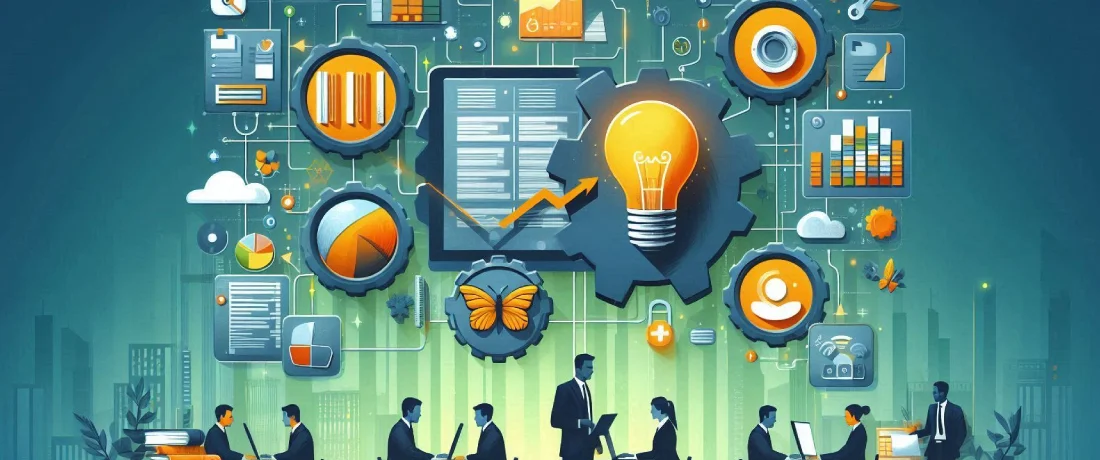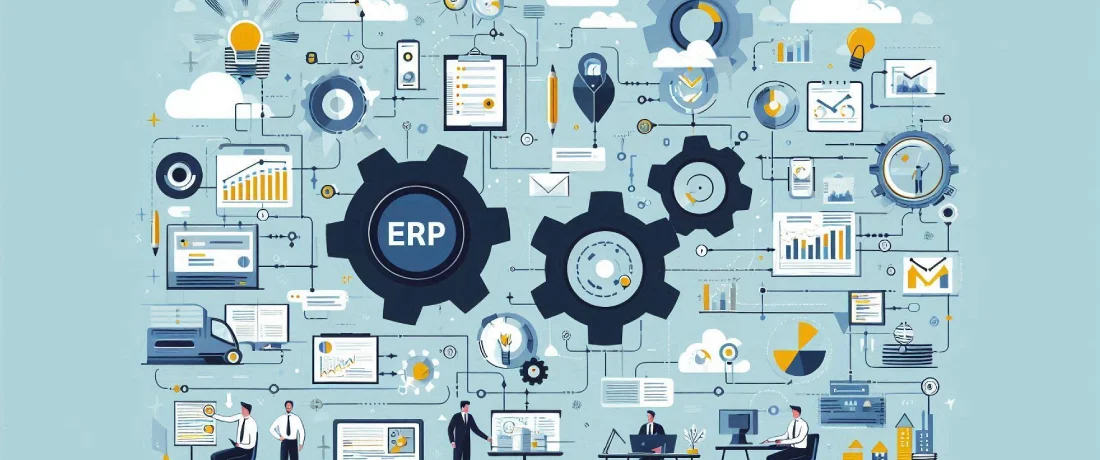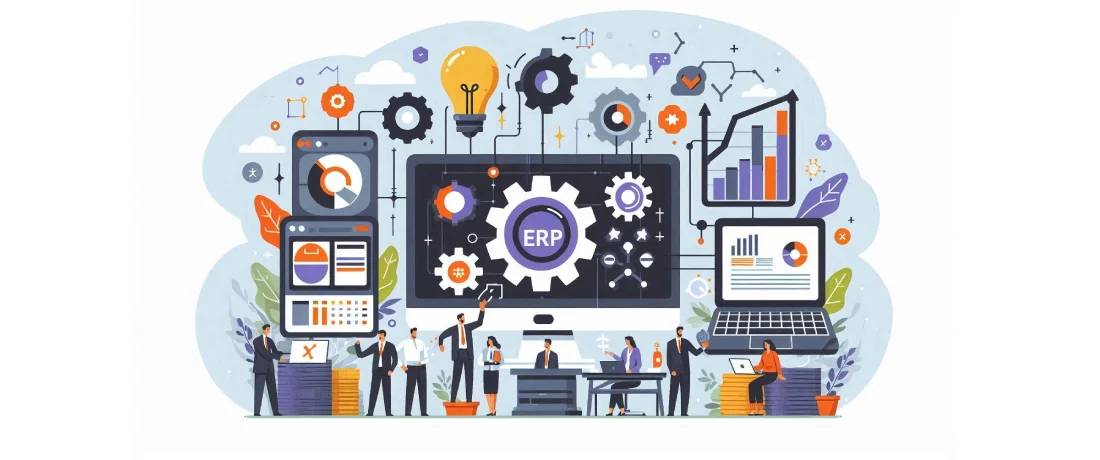Introduction
In today's fast-paced business world, success requires more than just having a good product or service.It demands operational excellence, a seamless flow of information, and a consistent approach to every aspect of the business. While numerous tools and strategies exist to achieve this, one stands out as a true game-changer: **Enterprise Resource Planning (ERP) software**. Beyond its individual functionalities, the true power of ERP lies in its ability to **integrate various business processes and systems**, creating a unified platform that facilitates consistency, eliminates redundancies, and propels efficiency. This article delves into the ways ERP integration empowers businesses to streamline operations, enhance data visibility, and ultimately, drive sustainable growth.
What is ERP Software Integration?

ERP Software Integration is the process of connecting an Enterprise Resource Planning (ERP) system with other software applications and data sources to ensure seamless data flow and unified operations across different business functions. This integration enables real-time data sharing, improved efficiency, and better decision-making by consolidating information from various departments such as finance, sales, human resources, and supply chain into a single, cohesive system.
How Does an ERP Software Integration Work?
ERP Software Integration works by linking the ERP system with other software applications and data sources to ensure seamless communication and data exchange. Here's how it typically works:
Identify Integration Needs
Determine which systems and processes need to be integrated with the ERP, such as CRM, e-commerce platforms, inventory management, or human resources systems.
Select Integration Tools and Methods
- APIs (Application Programming Interfaces): APIs allow different software systems to communicate with each other by defining a set of rules and protocols for data exchange.
- Middleware: Middleware acts as a bridge between different applications, enabling them to interact and share data without needing direct connections.
- ETL (Extract, Transform, Load): ETL processes extract data from various sources, transform it into a compatible format, and load it into the ERP system.
Data Mapping and Transformation
Define how data fields from different systems correspond to each other and ensure that data is transformed into a compatible format for the ERP system.
Integration Testing
Conduct thorough testing to ensure that data is accurately transferred between systems and that the integration does not disrupt existing operations.
Implementation and Monitoring
Deploy the integration in a live environment and continuously monitor its performance to identify and address any issues or inefficiencies.
Maintenance and Updates
Regularly update the integration to accommodate changes in software versions, business processes, or data requirements.
Benefits of Integrating ERP Software into Your Business

There are many benefits to integrating ERP software, including:
-
Improved Data Accuracy
Eliminate manual data entry and inconsistencies, resulting in accurate and reliable information for informed decision-making.
-
Streamlined Processes
Automate data flows and business processes, enhancing efficiency and reducing manual effort.
-
Enhanced Visibility
Gain a comprehensive view of business operations across all departments, facilitating better coordination and collaboration.
-
Improved Customer Service
Integrate customer data, orders, and support systems to provide personalized and efficient service.
-
Increased Productivity
Reduce time spent on repetitive tasks, allowing employees to focus on strategic initiatives and value-adding activities.
-
Cost Savings
Minimize manual work, reduce errors, and optimize resource utilization, leading to significant cost reductions.
Best Practices for Successful ERP Integration

Define Clear Business Objectives
Identify your specific goals and challenges that ERP software can address.
Choose the Right ERP Solution
Carefully select an ERP system that meets your unique business requirements and industry standards.
Develop a Comprehensive Implementation Plan
Establish a detailed plan outlining timelines, roles, responsibilities, and communication strategies.
Involve Key Stakeholders
Ensure all departments are engaged in the implementation process and understand their roles.
Provide Adequate Training
Offer thorough training to employees on using the new ERP system effectively.
Manage Change Effectively
Implement change management strategies to minimize resistance and ensure a smooth transition.
Monitor & Optimize
Continuously monitor the performance of the ERP system and make necessary adjustments to optimize its effectiveness.
Key Considerations for ERP Integration

Budget
Assess the cost of implementation, including software licenses, consulting fees, and training expenses.
Timelines
Determine realistic timelines for implementation and consider potential delays.
Data Migration
Plan for the seamless transfer of data from existing systems to the new ERP solution.
Integration with Existing Systems
Ensure compatibility with current software and applications.
Security & Compliance
Implement robust security measures and ensure compliance with relevant regulations.
Challenges of ERP Software Integration

ERP software integration can provide numerous benefits for businesses, such as streamlining processes and centralizing data. However, the process of integrating ERP software into an organization's existing systems can be challenging. Some common challenges that companies may face during ERP software integration include:
-
Data synchronization
Since ERP systems store and manage large amounts of data, ensuring the accuracy and consistency of data across different platforms can be a major challenge.
-
Customization
Most organizations have unique business processes and requirements, which may not align with the standard features of ERP software. As a result, customization is often required, which can increase costs and complexity.
-
Legacy systems
Many companies still rely on legacy systems that are not compatible with modern ERP solutions, making integration more difficult.
-
User resistance
Introducing new software into an organization requires employees to adapt to new processes and workflows, which can be met with resistance from those who are used to the old system.
-
Integration issues
Integrating multiple systems together can lead to technical challenges such as compatibility issues or data migration problems.
-
Lack of expertise
Implementing an ERP system often requires specific technical skills that a company's IT team may not possess, leading to delays and additional expenses in hiring external consultants.
Conclusion
In today's fast-paced business world, operational excellence is key to staying competitive. Enterprise Resource Planning (ERP) software is essential for integrating various business processes, enhancing data visibility, and driving sustainable growth. Effective ERP integration connects disparate systems, enabling real-time data flow, improved efficiency, and better decision-making.
For seamless ERP integration and expert app development, trust Whiten App Solutions. We specialize in creating tailored web and mobile solutions to meet your business needs, ensuring efficient and scalable operations. Visit our website or contact us today to learn how we can help your business thrive.


